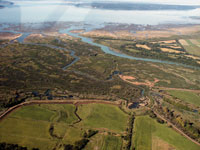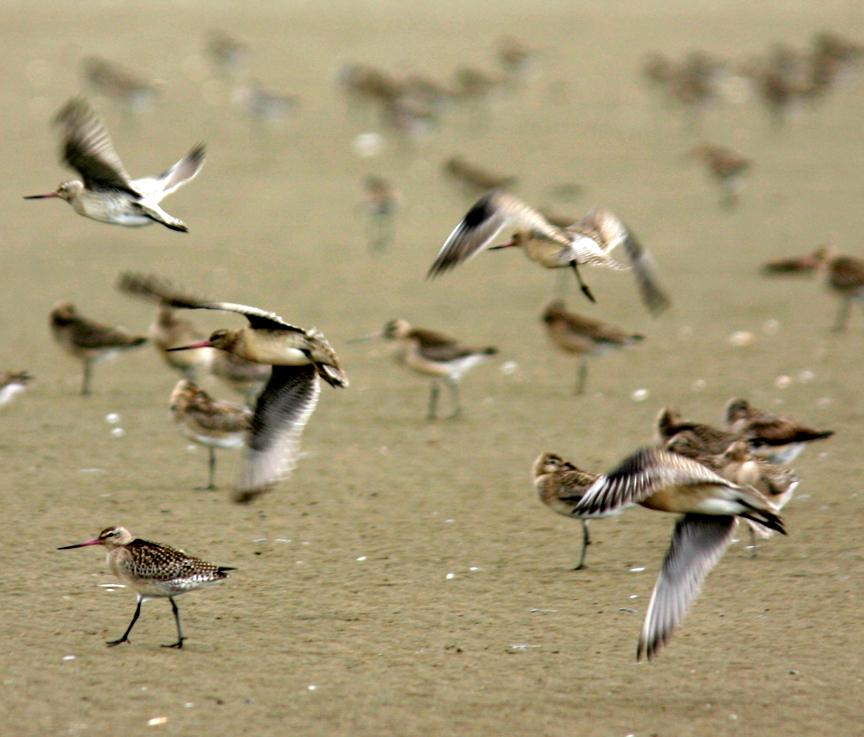- Home
- About S&T
- Taxa/Organisms
- Ecosystems
- Issues
- Methods & Tools
- Reports & Publications
- Location
- Search
Publisher: USGS | Science Center: Patuxent Wildlife Research Center (PWRC, Laurel) | Format: URL
www.pwrc.usgs.gov — Information about ecotoxicological exposure and its effects on terrestrial vertebrates residing in estuarine and coastal habitats like the Atlantic, Gulf and Pacific Coasts, Alaska and Hawaii, as well as the Great Lakes. These vertebrates include birds, mammals, amphibians and reptiles. The data is a compilation of results from computerized More...

September 2008 | Publisher: USGS | Format: URL
pubs.usgs.gov — Water is among Florida's most valued resources. The State has more than 1,700 streams and rivers, 7,800 freshwater lakes, 700 springs, 11 million acres of wetlands, and underlying aquifers yielding quantities of freshwater necessary for both human and environmental needs (Fernald and Purdum, 1998). Although renewable, these water resources are More...

June 2008 | Publisher: Other Federal Agency (U.S. Environmental Protection Agency (EPA)) | Format: URL
www.climatescience.gov — The U.S. Environmental Protection Agency has released a report that can help reduce the potential impact of climate change on estuaries, forests, wetlands, coral reefs, and other sensitive ecosystems. The report identifies strategies to protect the environment as these changes occur. The report finds that climate change can increase the impact of More...

2008 | Publisher: USGS | Format: URL
soundwaves.usgs.gov — U.S. Geological Survey (USGS)'s Western Region held an internal USGS workshop on Sea-Level-Rise Impacts on November 6-7, 2007, in Menlo Park, California. The meeting was attended by 30 scientists from four USGS disciplines (geology, geography, biology, and water) and 13 different science centers in the Western Region. In part a follow-up to the More...

2005 | Publisher: Other Federal Agency (United States Fish and Wildlife Service (USFWS)) | Format: .PDF
www.fws.gov — This study measured wetland trends in the conterminous United States between 1998 and 2004. The estimates of estuarine emergent area were made prior to Hurricanes Katrina and Rita during the summer of 2005. By design, intertidal wetlands of the Pacific coast, reefs and submerged aquatic vegetation were excluded from this study. An interagency More...

Publisher: USGS | Science Center: Western Fisheries Research Center (WFRC, Seattle) | Format: URL
wfrc.usgs.gov — Over the past 150 years, land reclamation activities have resulted in loss of significant amounts of tidal marshes (sometimes referred to as inter-tidal wetlands, the estuarine zone that is alternately flooded and exposed) in San Francisco Bay and the Sacramento-San Joaquin Delta (Bay/Delta). Recently, in an effort to halt or reverse the decline More...

Publisher: USGS | Science Center: Alaska Science Center (ASC, Anchorage) | Format: URL
alaska.usgs.gov — This web resource provides information concerning the on-going Research at the USGS Alaska Science Center on birds and avian influenza (bird flu). The site links to quick facts, on-going research, workshop results, monitoring and surveillance, guidelines on how to safeguard against avian influenza, publications and reports, migratory bird More...

Publisher: USGS | Science Center: Western Fisheries Research Center (WFRC, Seattle) | Format: URL
wfrc.usgs.gov — Threatened and endangered salmonids in the Pacific Northwest often use backwaters and wetlands as they migrate toward the ocean, however our understanding of the role of wetlands to juvenile salmonids is limited. The major Objective of this study was to determine whether juvenile steelhead were being tapped on the wetland during spring, and More...

Publisher: USGS | Format: URL
pubs.usgs.gov — The U.S. Geological Survey (USGS), in collaboration with the USDA Farm Service Agency and Natural Resources Conservation Service, initiated a study to develop and apply approaches to quantify changes in ecosystem services resulting from wetland restoration activities funded by the USDA. Surveys from this study included catchments with seasonal and More...

Publisher: USGS | Science Center: Leetown Science Center (LSC, Kearneysville) | Format: URL
www.lsc.usgs.gov — Freshwater mussels are declining rapidly in response to habitat degradation associated with anthropogenic changes. Williams et. al. (1993) reported that 213 of the 297 recognized taxa are considered endangered, threatened, or of special concern. There is a documented need for BRD centers to provide guidance on freshwater mussel ecology in general, More...

Publisher: USGS | Science Center: Northern Prairie Wildlife Research Center (NPWRC, Jamestown) | Format: URL
www.npwrc.usgs.gov — This resource is a species profile of the purple loosestrife (Lythrum salicaria), which is considered an invasive plant species. Its displacement of native species in wetlands has led to the loss of suitable habitat for wildlife. L. salicaria is the only reddish-purple flowered plant to develop massive monospecific blocks of showy floral displays More...

Publisher: NBII | Format: URL
www.nbii.gov — Natural resource managers face complex decisions that require a clear understanding of the status of wildlife populations and their habitats. Monitoring is key to making effective management decisions and evaluating the outcomes of those decisions. The goal of NRMP is to improve the accessibility of monitoring efforts to resource managers to aid More...
